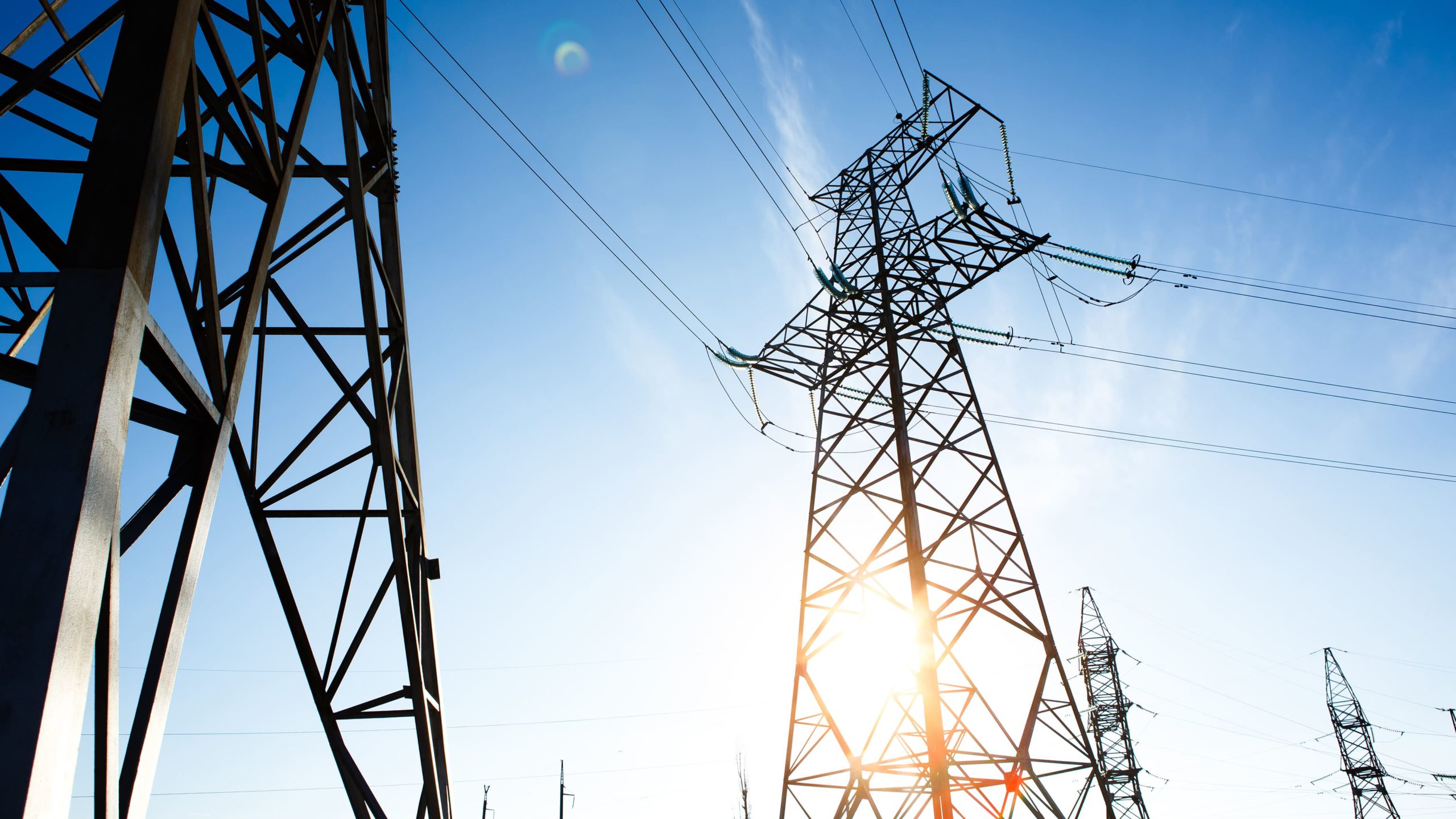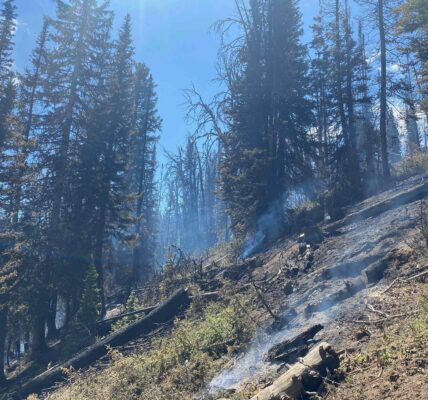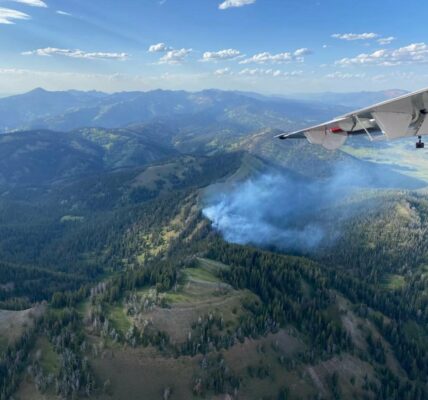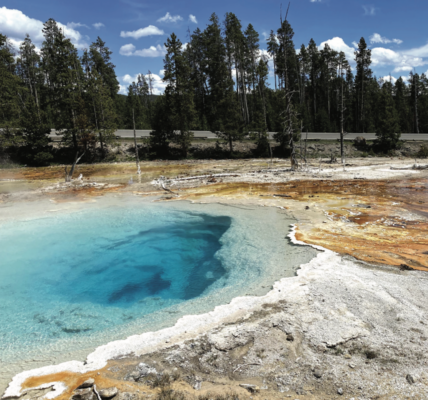How much is too much? – Rocky Mountain Power is pitching historic rate hike: Here’s what it could mean for Wyoming consumers

By Maya Shimizu Harris
Casper Star-Tribune
Via- Wyoming News Exchange
CASPER — About a dozen people spoke at a Rock Springs meeting earlier this month about a historic rate hike proposal brought by Rocky Mountain Power — Wyoming’s largest electricity provider. Though more than 70% of Rocky Mountain Power’s customer base consists of industrial users, most of the people who spoke at the public hearing were typical residential customers and community members who fear the impact these cost increases could have on their lives.
Rock Springs Mayor Max Nicholson said the rate increases could threaten lives; those who can’t afford to pay their electricity bills would be vulnerable to severe weather, which could result in “people being hospitalized and dying from the heat.”
The hiked rates, he added, could also hinder the city’s ability to provide services.
Rock Springs resident Elizabeth Domenici warned the increases would be “catastrophic for small businesses.”
Another resident, Toni Bate, started to cry as she gave her testimony.
“I have hardly any money. I don’t know where I’d get the money to pay for this,” Bate said.
Though people in Wyoming can turn to various programs for energy assistance, one pandemic-era program, which helped more than 7,000 households pay for electricity last year, is no longer an option after it ended in June.
The cost of rate increases
Rocky Mountain Power, which is owned by parent company PacifiCorp, is Wyoming’s largest electric utility and has roughly 150,000 customers in the state.
The company is currently proposing two rate increases. The first increase of an average 7.6% took effect on an interim basis at the beginning of this month, although it’s still subject to Public Service Commission review with a decision expected later this year.
This “energy cost adjustment mechanism” rate hike would result in an extra $50.3 million for Rocky Mountain Power, which would cover a chunk of the roughly $90 million the company paid in excess of its forecast for last year.
This change isn’t unusual — it’s normal for utilities to adjust prices each year in response to market fluctuations.
But Rocky Mountain Power is also requesting a more significant “general rate case” increase of an average 21.6% for the next several years, bringing in about $140 million annually for the utility. This increase would take effect Jan. 1 and involve a more fundamental change to the utility’s payment structure.
The two rate hikes would cost, on average, $19.72 more every month for the typical residential consumer, according to the company’s estimates. (The rate increases vary among different customer “classes,” with some having a higher proposed increase than others. The 7.6% and 21.6% numbers are averages across all classes.)
It’s been more than a decade since Rocky Mountain Power has asked for a rate increase of more than $40 million per year.
Its most recent request of a similar scale came in 2010, when the company asked for an increase totaling about $97.9 million per year. State regulators ultimately approved less than half that amount.
There are many factors driving the proposed rate hikes, Stacy Splittstoesser, the company’s regulatory affairs manager for Wyoming, explained at the July meeting. There are increased fuel costs. There’s market volatility. There has been severe weather and drought.
Rocky Mountain Power has cut costs in other areas; its renewable energy development, for example, has saved ratepayers more than $85 million, primarily from wind power and transmission expansion, according to the utility.
Nationally, electricity rates rose about 1.6% — and about 7.2% for residential consumers specifically — between May 2022 and May 2023, according to federal data.
For Wyoming, overall electricity prices actually dropped from 8.37 cents to 8.28 cents per kilowatt hour in that same time period, though residential rates creeped up about 3.5% from 11.51 cents to 11.93 cents.
Paying for electricity
The potential increase in electricity rates comes as the Emergency Rental Assistance Program (ERAP) — a pandemic-era federal program that, among other things, helped people in Wyoming cover their electricity expenses — came to an end last month.
The program provided assistance for eligible households for up to 18 months of unpaid past due rent and utility services incurred after March 13, 2020.
From the time ERAP launched in April 2021 to the end of that year, 70 households in Wyoming received a total of almost $18,000 to cover unpaid electricity costs, according to data provided by the Wyoming Department of Family Services. The next year, that number jumped to 7,349 households for a total of about $2.4 million. (The significant jump in numbers from 2021 to 2022 is probably in most part because of changes that allowed states to use the funding more flexibly.)
This year, through the end of June, 3,779 households received more than $1.3 million through the program to help cover their electricity bills.
ERAP stopped taking new applications in November and ended in June.
But there are still several other ongoing programs that help Wyomingites cover their electricity expenses, such as federal programs like the Wyoming Homeowner Assistance Fund Program (HAF) and the Low-Income Energy Assistance Program (LIEAP) as well as the Energy Share of Wyoming, a private nonprofit.
LIEAP helps low- and fixed-income households pay for heating costs in winter months and also assists with energy-related emergencies like utility shut-offs and heat loss from broken furnaces.
Last year, 2,575 households received money from the program for heating electricity, totaling about $1.5 million.
Crisis electricity payments for 2022 aren’t available, but in 2021, 1,657 households received more than $440,000 in assistance.
The number of people who applied for the program nationally in 2023 is the highest rate since 2011, according to an April report from the National Energy Assistance Directors’ Association, the main educational and policy organization for state directors of the program.
That’s not the case in Wyoming, where the number of households that have received assistance through the program to pay for heating electricity has stayed relatively level since 2019. The number of households receiving crisis electricity payments decreased about 15% from the same year to 2021.
Nationally, about 20.5 million households were behind on their electric bills at the end of January, the National Energy Assistance Directors’ Association’s report says. Families owed an average of $617 on their electric bills — up from $594 in January of last year.
Wyoming’s HAF Program, which launched in May 2021 and is ongoing, helps people cover past due utility payments.
Last year, it dispersed about $121,000 for 211 households to cover payments specifically for electricity, according to data provided by the Wyoming Department of Family Resources.
So far this year, the program has given about $84,000 for 119 Wyoming households to pay for electricity costs.
It’s unclear how many Wyomingites are behind on their electricity payments for Rocky Mountain Power, or if that number has increased.
Rocky Mountain Power spokesperson Tiffany Erickson said in an email that the company keeps customer account information private and is unable to provide this data. She added that when customers are behind on their bills, Rocky Mountain Power encourages them to work with customer service to figure out a payment plan. Customer service can also help people apply for private and federal assistance through the Energy Share of Wyoming and the Wyoming Department of Family Services, she said.
Reviewing the rate hike
Rocky Mountain Power’s proposed rate increases aren’t a given. They still have to go through a review process with the Public Service Commission.
As for the bigger 21.6% rate case in particular, the chance of Rocky Mountain Power getting 100% of what it’s asking for is unlikely, though it’s uncertain at this point how much of the utility’s request the Public Service Commission will approve.
Several groups — including Wyoming’s Office of Consumer Advocate, an independent arm of the Public Service Commission — believe a substantial reduction is warranted and are intervening in the rate case.
A public hearing on the 21.6% proposed rate hike is scheduled for Oct. 25. Another will be held Dec. 19 for the 7.6% energy cost adjustment mechanism rate hike.
The Public Service Commission will also hold another public comment hearing on the two rate hikes, though the time and place has not been confirmed. Members of the public can submit written comments on the rate hikes at any time to the Public Service Commission by emailing wpsc_comments@ wyo.gov.





